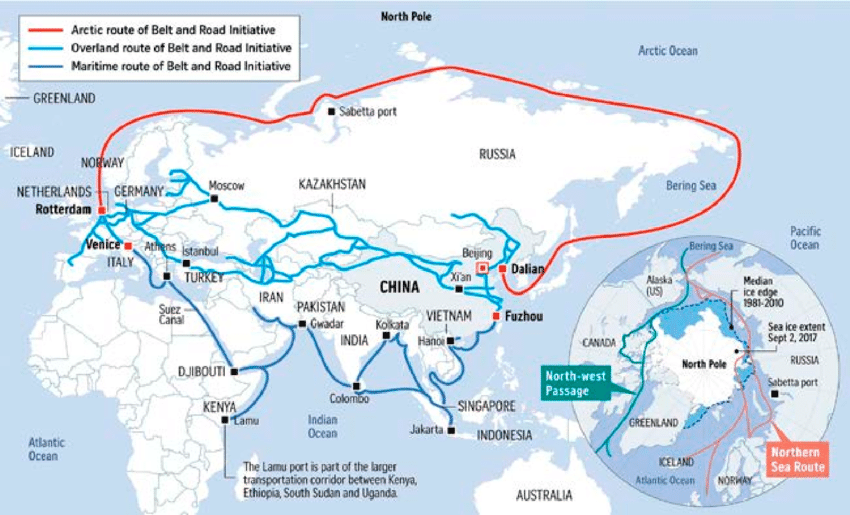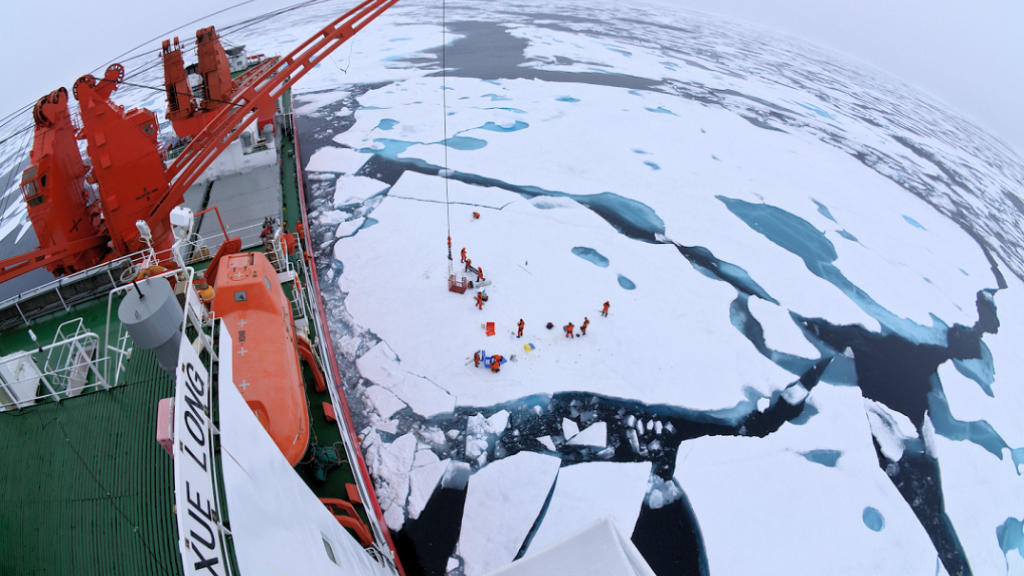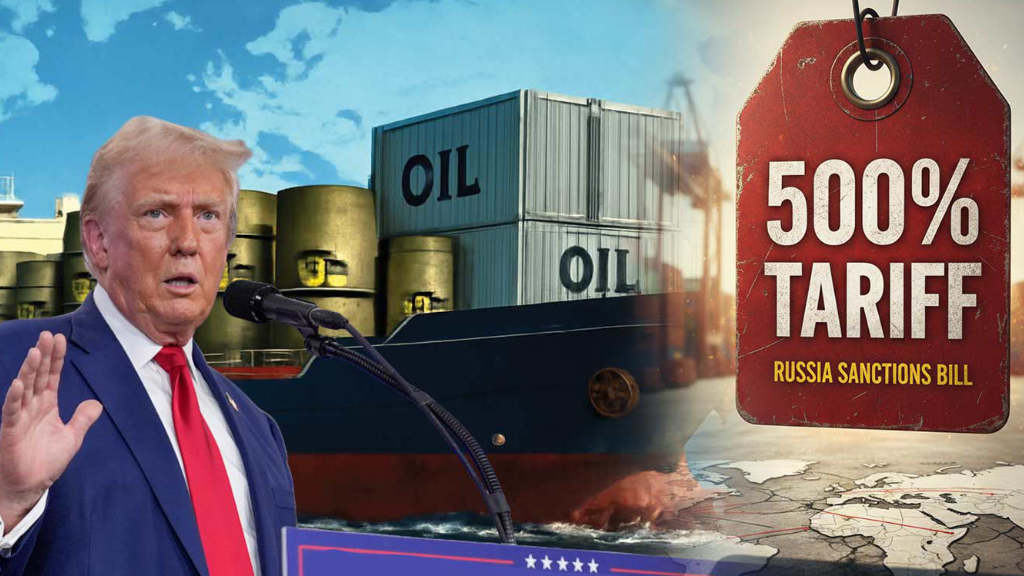The Arctic, endowed with significant resource wealth, is envisioned as an advantageous multimodal transportation link that presently enables a connection between the Asia-Pacific and European regions. Legal issues surrounding the Arctic’s jurisdiction provoke contention over rights to these lands, drawing in not just the circumjacent sovereign states but also nations keen on making inroads into this region. Analysts point out four tiers of rivalry and collaboration in the Arctic.
The inaugural tier is comprised of the Arctic nations or the “Arctic Quintet”: Russia, the United States, Canada, Denmark, and Norway, which possess the Arctic Ocean’s coastline. The proximate Arctic states make up the second tier: Sweden, Finland, and Iceland. These two tiers together form the “Arctic Octet,” that is, eight nations with territories within the Arctic Circle and maritime territories in the Arctic, along with legitimate terrestrial and maritime borders. These countries are members of the Arctic Council (AC). The third tier is represented by global organizations (such as NATO, the European Union, and Northern European country organizations), while the fourth tier include s non-Arctic states that nevertheless express interest in the Arctic, among which are included nations like China, Japan, India, and Singapore.
The growing influence of the People’s Republic of China is expanding each year, reaching increasingly further into various global territories. The international community has mixed reactions to China’s assertive move into the Arctic region. As an example, Norway’s Foreign Affairs Ministry has noted that the Arctic, alongside Africa, could emerge as a new area where China aims to advance its geopolitical ambitions. China’s strategy in the Arctic can be delineated into two primary goals: firstly, ensuring secured access to essential mineral resources vital for China’s expanding economy, and secondly, the pursuit of commercial maritime activities through Arctic waters. This article will particularly explore the latter aim of China’s Arctic agenda.
The “Belt and Road” initiative, launched by China in 2013, stands out as a groundbreaking venture recognized globally for its vast scope and ambitious nature. This strategic blueprint, unveiled by Xi Jinping, is comprised of two main components: the land-based “Silk Road Economic Belt” and the nautical “21st Century Maritime Silk Road.” A critical aspect of this broad strategy is the incorporation of the “Polar Silk Road,” signifying China’s ventures into the Arctic domain. Central to the fruition of this comprehensive strategy is leveraging the commercial potential of Russia’s Northern Sea Route (NSR), positioning Russia as an indispensable ally in the execution of China’s vision for an “Arctic Silk Road.”
First announced during Xi Jinping’s presentation at Nazarbayev University in Astana in 2013, this proposition gained traction and was subsequently reaffirmed at the 2015 EAEU summit, highlighting it as a modern framework for fostering Europe-Asia relations. The inaugural “Belt and Road” forum in 2017 attracted participation from 29 countries, mainly those through which the proposed routes are expected to traverse. The follow-up forum in 2019 expanded its reach, bringing together representatives from 150 countries, clearly reflecting the initiative’s global appeal and its role in driving forward the agenda of globalization.
This synthesis underscores the “Belt and Road” initiative’s extensive reach, merging varied regions from the vast expanses of Eurasia to the Arctic’s frozen borders. It paints a picture of China’s ambition to weave an intricate web of trading pathways and alliances that span across continents, with the NSR as a pivotal conduit in this grand global endeavour. The initiative’s escalating scale, as evidenced by increasing global participation, highlights its capacity to transform international trade dynamics and economic interactions.
Despite being geographically distant from the Arctic, China has developed a keen interest in the region, an interest that complements Russia’s Arctic endeavours yet also extends beyond them into unique ambitions. China’s Arctic policy is framed around three primary objectives: economic gains, geopolitical influence, and environmental protection. These goals underscore China’s broader strategy to diversify its economic dependencies and leverage the Arctic’s untapped resources and potential shipping lanes.
The global logistics landscape features a variety of routes connecting Asia and Europe, each with distinct characteristics regarding transport method, journey length, and delivery speed. A significant number of these routes converge on Lianyungang, a pivotal port city in Jiangsu province, which serves as a vital node due to its strategic location along the coast and near the Yangtze River, China’s most significant industrial waterway. This geographical advantage positions China to further its ambitions for a global maritime trade network, a critical component of its economic growth strategy.
The Northern Sea Route emerges as a focal point of China’s Arctic strategy, offering a shorter, more efficient path between Europe and Asia that could reduce reliance on traditional, risk-prone maritime routes such as the Malacca Strait and the Suez Canal. The successful voyage of the Chinese vessel Yong Sheng in 2015, which saved time and fuel, illustrates the NSR’s commercial viability. However, the current dependence on routes controlled by other nations, like the Malacca Strait, highlights the geopolitical complexities and the potential for disputes that could threaten China’s maritime trade.
China’s pursuit of the NSR reflects a strategic manoeuvre to enhance its trade security and environmental stewardship while bolstering its geopolitical stance in the Arctic and beyond. In the middle of 2017, China’s government officially announced its intention to develop the “Polar Silk Road,” a key component of its broader Belt and Road Initiative (BRI). This declaration intertwined the vision of a seamless connection between the BRI and the Eurasian Economic Union, positioning the Arctic route as an expedited link between Asia and Europe, thereby marking it as a pivotal extension of the BRI. The disparity in Arctic engagement between Russia, which possesses extensive navigational experience in the Arctic seas, and China, with its capacity and willingness to fund the maritime corridor for efficient utilization, underscores a partnership of complementary strengths.
The Arctic Silk Road represents a pioneering navigational channel that traverses the Arctic Circle to connect significant economic zones across North America, East Asia, and Western Europe, offering the most direct route for trade between these regions. With its geographic advantage, this passage is seen as an essential element in China’s global strategic ambitions, which include establishing a firm foothold in the Arctic. Despite Russia’s dominant position in Arctic navigation and expertise, China’s venture, highlighted by the Tian En vessel’s journey through the Northern Sea Route with Russian nuclear icebreaker escort, reflects China’s strategic aim to ensure uninterrupted transport of its commodities. The commissioning of China’s first domestically produced icebreaker, Xue Long 2, along with plans for additional icebreakers, signals China’s resolve to affirm its Arctic presence and navigate independently.

The allure of the Arctic has transcended China’s strategic ambitions to capture the national imagination, with a significant surge in Chinese tourists embarking on polar expeditions to witness the Arctic’s natural wonders. This growing public interest is matched by strategic Sino-Russian cooperation on the Northern Sea Route, highlighting a mutual interest despite the logistical and environmental challenges of Arctic navigation. This collaboration points towards a concerted effort to leverage the Arctic’s unique geographical and economic opportunities for shared advantages.
China and Russia’s maritime authorities continue their dialogue under a mutual understanding memorandum for Arctic Sea collaboration to enhance their cooperative framework and policies for Arctic development. Data from the Russian Arctic logistics hub revealed that in 2016, ship traffic through the Northeast Arctic Passage surged by 35% from the previous year, with 297 vessels navigating the route. This upward trend in maritime traffic is expected to grow annually, fueled by the accelerating melt of Arctic Sea ice.
The Northern Sea Route stands out for its strategic advantage in reducing transit times and costs, aligning with China’s goal to cement its presence in the Arctic region. The diminishing Arctic ice area, which saw a reduction of 2.3 million square meters between 1984 and 2018, highlights the NSR’s potential viability. Despite challenges, China’s eagerness to utilize the NSR for freight transportation to Europe is evident. This route, being 6,400 km shorter than the traditional Suez Canal passage, offers significant fuel savings. Calculations by Chinese analysts suggest that a single voyage via the NSR can save up to US$3.5 million per voyage and shave off two weeks shipping time compared to the longer Suez route.
The global community’s growing fascination with the Arctic has positioned China as an eager participant in Arctic politics and economics, aiming to build a robust infrastructure and develop technological and human resources for an active role in exploiting Arctic resources and pathways. Future projections by some experts’ hint at the potential need for a Chinese military presence in the Arctic to safeguard its investments and interests, a scenario that might encounter resistance from Russia and other Arctic nations. Despite differing stances on NSR regulation — with China advocating for free and unregulated maritime transit, and Russia seeking full control over the route due to its proximity to Russian shores — Beijing considers Moscow as a crucial ally in the Arctic, viewing the NSR as a vital link in its Belt and Road vision.
Another area of collaborative effort between the two countries focuses on supporting environmental protection in the Arctic. Discussions on this cooperation commenced in May 1994 with the signing of an Environmental Protection Cooperation Agreement between the governments of the Russian Federation and the People’s Republic of China. However, a specific bilateral agreement dedicated solely to Arctic environmental protection issues remains unadopted, marking a significant oversight. Primarily, such an agreement is crucial for Russia, considering China’s activities in the Russian Arctic could potentially harm the region’s delicate and unique ecosystem.
Environmental collaboration is carried out through joint participation in international scientific and expert discussions on Arctic ecological security and through combined scientific research expeditions to the region. Both nations are active members of international organizations like the Arctic Council, the International Arctic Science Committee, the Pacific Arctic Group, and others, often addressing climate change and environmental conservation in the Arctic. Additionally, Russian and Chinese researchers, along with international academics, strive to develop scientific recommendations for protecting the Arctic nature and ensuring safe living conditions for the indigenous populations.
The environmental factor also plays a significant role in the further development of Chinese tourism. Hence, China stands to benefit from the extensive deglaciation of the Arctic in its quest to expand Arctic tourism. Chinese tourists have long been a significant source of income globally. Interactions between Chinese entities and northern and Russian communities are increasingly based not only on economic development and trade deals but also in the tourism sector, a powerful engine of economic growth. The economic boom in Asia and the shift of power from West to East have resulted in more Chinese families having the resources for global travel. Consequently, Chinese tourism is becoming increasingly important in Northern European countries, particularly in the Russian Federation, where tourism from East Asia, mainly China and South Korea, has recently been a stimulus for market and infrastructure development.
China’s involvement in Arctic development will not only attract investments into tourism but also contribute to the economic diversification of northern countries and Russia, which heavily rely on natural resource extraction. Joint Sino-Russian endeavours in the Arctic, especially the Yamal LNG project, showcase the dominant role of commercial entities in the bilateral cooperation within this region. The integration of Chinese transport companies into Arctic LNG ventures is gaining significance due to China’s escalating energy demands and the evolving Arctic energy landscape.
Given the Arctic’s challenging conditions and the icy passages of the Northern Sea Route, the transportation sector necessitates vessels with ice-breaking capabilities. The Yamal LNG project, a colossal energy initiative in the Arctic for extracting, liquefying, and shipping natural gas, is expected to produce approximately 16.5 million tons of LNG annually and 1.2 million tons of gas condensate. These outputs are targeted for the Asia-Pacific and European markets, with China being a significant recipient of about 3 million tons per year, highlighting its strategic market placement.
To assure effective transportation, Chinese logistic firms are crucial, enhancing the operational capabilities for LNG transport. The collaboration between Mitsui OSK Lines (MOL) and COSCO Shipping Energy Transportation Co., Ltd., which managed to navigate the Northern Sea Route eastward without icebreaker assistance, underscores the vitality of Chinese participation in the logistics of Arctic projects.
This burgeoning partnership sees China actively investing in the Arctic’s industrial development and LNG transport infrastructures, addressing the logistical challenges posed by the increasing scarcity of tanker-gas carrier capacities. The Yamal LNG project, partly financed and operationally supported by Chinese investments and technological inputs, demonstrates the symbiotic relationship between Russia’s resource-rich Arctic and China’s industrial and economic ambitions.
As both nations navigate the complexities of Arctic exploration and LNG production, their cooperative efforts reflect a broader strategy to harness the Arctic’s untapped resources while ensuring environmental stewardship and sustainable development in one of the planet’s most sensitive regions. Beyond their investment in the Yamal LNG project, Chinese enterprises have openly expressed their willingness to fund and partake in other major ventures in the Arctic region. In April 2019, NOVATEK inked a deal with the China National Oil and Gas Exploration and Development Corporation (CNODC), a subsidiary of the China National Petroleum Corporation (CNPC), and the China National Offshore Oil Corporation (CNOOC) for collaborative execution of the “Arctic LNG 2” project. This partnership was further solidified in June 2019, during the St. Petersburg International Economic Forum, where NOVATEK formalized an agreement for share purchase with CNOOC Ltd. As per these agreements, each Chinese firm will acquire a 10% stake in the “Arctic LNG 2” project. The “Arctic LNG 2” project, set to be developed at the Salmanovskoye (Morning) field, aims to construct three production lines with a total capacity of 19.8 million tons per year on gravity-based structures (GBS). Chinese transportation companies are anticipated to remain pivotal investors in Arctic LNG ventures, contributing to leasing, logistics infrastructure, shipbuilding, and more.
On July 7, 2019, an agreement was reached among NOVATEK, COSCO SHIPPING Energy Transportation Co., Ltd., Sovcomflot, and the Silk Road Fund concerning the establishment of “Maritime Arctic Transport” LLC. This agreement underscores the parties’ commitment to forging long-term partnerships for the joint development, financing, and implementation of new year-round logistics schemes for transporting hydrocarbons from Russia’s Arctic zone to the Asia-Pacific region and organizing transit cargo flow through the Northern Sea Route between Asia and Western Europe.
However, China and Russia’s Arctic governance perspectives notably diverge. Beijing advocates for a collective stewardship model, arguing that the Arctic belongs to the global community and suggesting a collaborative approach to regulation that includes non-Arctic nations like China. Moscow, on the other hand, champions exclusive rights for Arctic states, highlighting the significance of sovereignty over its Arctic expanse. These differences extend to debates over Russia’s rights to its Arctic coastal zones, China’s ambition to expand its icebreaker fleet, and differing views on environmental and indigenous people’s rights amidst China’s own controversial environmental and social policies domestically.
Despite these ideological divides, the collaborative dynamic between China and Russia in the Arctic is predicted to only grow stronger, driven by mutual interests and the vast potential for partnership. Russia benefits from Chinese investment in Arctic infrastructure and resource exploitation, while China gains access to crucial Russian hydrocarbon resources and icebreaker technology, enhancing its energy security. This interdependence suggests an evolving alliance, poised to navigate the Arctic’s future despite contrasting worldviews.
Looking ahead, the trajectory of Sino-Russian cooperation in the Arctic will likely be influenced by global economic trends, the evolving geopolitical landscape, and the international community’s response to Arctic development. While the partnership offers substantial economic benefits to both nations, it also requires them to navigate complex issues of sovereignty, environmental protection, and international law. The resilience of this partnership will depend on their ability to address these challenges collaboratively while respecting the interests of other Arctic states and indigenous communities.
The Sino-Russian economic relations in the Arctic, within the framework of the BRI, represent a multifaceted partnership with significant implications for regional development, global trade, and environmental sustainability. As the Arctic becomes an increasingly important arena for international cooperation and competition, the dynamics of this partnership will offer valuable insights into the future of global geopolitics and economic diplomacy.
The economic relationship between China and Russia within the Arctic, particularly through the lens of the Belt and Road Initiative, illustrates a complex interplay of strategic partnership, geopolitical ambitions, and environmental considerations. These, such as the Yamal LNG project, not only underscore the economic synergies between the two nations but also highlight the Arctic’s growing significance in global strategic calculations.
The partnership, while showcasing the potential for significant economic benefits and infrastructural development, also brings to the fore the delicate balance required in managing the Arctic’s fragile ecosystem. The environmental sustainability of such ventures remains a pivotal concern, necessitating stringent adherence to sustainable practices and international cooperation to mitigate ecological impact.
Moreover, China’s strategic incorporation of the Arctic within the ambit of the BRI, aiming to secure a stable energy supply and establish alternative trade routes, reflects its broader global ambitions. This move, however, introduces complexities in Arctic governance, posing challenges to Sino-Russian relations and their interactions with other Arctic and global stakeholders. As this partnership progresses, it will be imperative for China and Russia to navigate the geopolitical and environmental challenges with a cooperative and transparent approach. The success of their Arctic cooperation will likely hinge on their ability to align their economic objectives with the principles of environmental conservation and respect for the sovereignty and rights of other Arctic nations and indigenous peoples.
Ultimately, the Sino-Russian economic relations in the Arctic, framed by the BRI, offer a unique perspective on the evolving dynamics of global geopolitics and the imperative of sustainable development in one of the world’s most sensitive regions. The future of this partnership, poised between economic ambition and ecological responsibility, will significantly influence the Arctic’s role in the global economic and environmental landscape.
This article originally appeared in VIF India.
Further Reading
Russia’s Northern Sea Route
We extensively cover this subject in Chapter 13 “Russia-Asia Transport Corridors” in our 2024 Russia’s Pivot to Asia guide. It is a complimentary PDF download and can be accessed in English here and Russian here.





